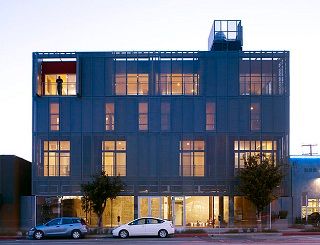From Guest Blogger Andrew Womble: Using Passive Solar Design in Your Home
While solar power has become prevalent in the mainstream construction business in the past decade, passive solar design has been used around the world for thousands of years. Ceramic tiles and stones walls in the Mediterranean made it possible to keep homes cool even under the scorching heat of the summer sun. Likewise, small window openings and semi-subterrain living spaces in northern climates promoted efficient heat retention. Today, the basic principle of passive solar design is to utilize the power of the sun by simply situating your home, building it with specific material, and installing design features that promote a good balance of heat reflection and absorption.
Placement of home
The most important element of passive solar design is the proper placement of your home. In fact, many home companies consider this to be a crucial first step when designing a new home such as these home builders here. Not using mechanical equipment to utilize solar power means that you will have to maximize the advantages of the varied strength and availability of the sun’s rays. For instance, the sun is higher during summer than winter. Awnings and movable shades will keep out the heat of summer sun for cooling your home and allow it in through large windows during the winter months for passive heating. The exact pitch of your awnings will change according to your latitude to compensate for the exact angle of sunrays reaching your windows. In general, buildings using passive solar design are stretched out from the east to the west with large windows placed on south facing walls. Simultaneously, builders also reduce the number and size of windows on the north façade of the building.
Passive cooling
The second most important element of passive solar design is making sure that excess heat can escape from your home during the warmer months. You can strategically place windows, vents and door openings throughout the house to use the naturally occurring breeze and wind for cooling your home as well as for venting out allergens and superfluous moisture. This type of cooling is not to be confused with poor insulation that prevents a controlled venting. You can also select specific building materials such as stone, brick, or concrete that absorbs, transfers, and radiates heat well for a delayed release during the cooler night hours.
Solar panels
Most likely, you will wish to install a series of solar panels in conjunction with your passive solar design. When installed on your home’s roof, these photovoltaic panels will not only produce electricity but also prevent overheating in your attic space. There are a great variety of solar systems on the market today from ready to install kits to DIY solutions. They can fit all budgets and situations as well as designs and building methods. You can choose to have stand-alone off-grid solution or have your solar system tied in to your local electric network depending on your lifestyle and personal needs.
All things considered, solar passive design is a great option for those who wish to pursue an environmentally friendly building project that utilizes naturally renewable resources for heating and cooling without any carbon emission. It will also provide considerable savings to homeowners in the long run, and produce better quality air and a cleaner local environment.


Great ideas- the question is how to make it happen- only incentives or and legislation